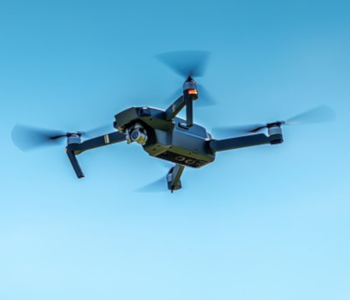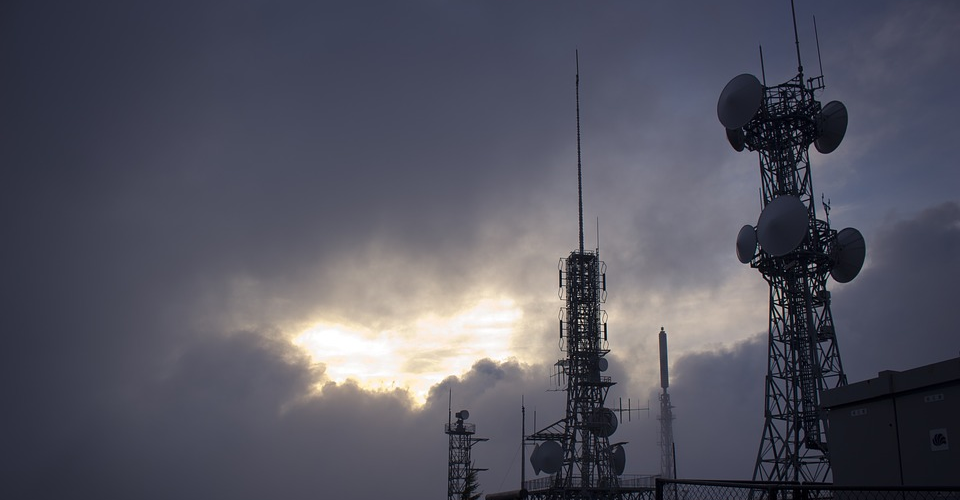A Guide to Tower Inspection Using Drones
Taking aerial photos is an easy way to earn some extra cash using drones, but if you really want to earn those big bucks quickly, you’ll have to offer services that are a bit less common. One of the more lucrative alternatives is tower inspection, or simply the use of a drone to inspect cell towers, radio towers, and other similar tall structures.
What’s the appeal of drones as tools for tower inspection? What are the considerations that a drone pilot must make in terms of hardware, software, and skills before they can undertake such a job?
Applications of drones in tower inspection
Utility companies and telecommunications firms can call upon the services of a drone pilot do tower inspection for several reasons:
Damage assessment
In the event of a natural disaster, cell towers and radio towers are some of the hardest-hit infrastructure because of how large they are. Considering how important it is that they are repaired immediately, drones are commonly used because of how quickly they can generate results. In most cases, a tower inspection can be completed within just a single battery cycle of a drone, which is about half an hour.
Repair preparations
If an inspection finds damaged sections that need to be repaired, it will entail sending a crew up the tower. This is an inherently dangerous activity, especially since any damage can compromise the tower’s structural integrity. Thus, a second inspection may be in order to determine the safest approach for the repair team.
For such an inspection, a high level of detail is needed. Fortunately, camera drones are now equipped with zoom lenses that allow focus on specific details without having to fly too close to the tower.
Regular maintenance
Even in the absence of a natural disaster, an inspection of a tower may be needed as part of regular maintenance. Natural wear and tear may take its toll over time, and it’s always a good idea to step in with repairs
Having a drone pilot do regular inspections of a tower facility is often a good idea because of how cheap it is. The speed with which a drone can finish an inspection job also means minimal shutdown periods for these facilities.
Why use a drone for tower inspection?
Towers have been around for decades and have been inspected manually for just as long. What makes drones, a relatively new technology, exceptionally suitable as alternative inspection tools?
Safety
The primary advantage of using drones over inspection teams made of people is that it makes the whole job a lot safer. No longer do people need to climb up these towers to look for damaged areas and expose themselves to fall hazards. With a drone, there’s virtually no risk of any person getting injured.
Level of detail

Drones aren’t just good for taking aerial photos and videos. With a little help from special software, a series of overlapping aerial photos can be processed to create a 3D model of a tower. A 3D power is a very powerful inspection tool as it allows engineers and technicians to zoom in on any feature and make an infinite number of measurements. This thoroughness in detail is something that simply cannot be recreated through old-fashioned inspection techniques.
Speed
When doing a tower inspection, multiple teams will typically take several weeks to complete a job at a satisfactory level of detail. This will entail massive logistical movements and significant downtime for the tower.
By using a drone, a job that would normally take a few weeks to finish will only take less than an hour. Deployment is also very easy. Instead of the massive equipment mobilization needed for people to scale a tower, a drone-based inspection can be done by a single person or, at most, a two-man crew. The speed of deploying a drone cuts back on costly downtime.
Cost
Ultimately, the choice of making the switch to drone technology is a matter of cost. Since a drone only needs a single operator and can be deployed in minutes, companies can save on manpower and logistical expenses. They can also minimize downtime, which has a massive effect on their profits.
What will you need to do a tower inspection?
As you can imagine, doing a tower inspection is a lot more complex than just taking photos from above. In most cases, you will have to augment your standard drone with a few bits and pieces to offer this type of service to potential clients. You might even need to get special training. If this is a field you’re interested in entering, then here are some of the basic requirements:
Hardware
The usual prosumer drones won’t do for such a high-level application. You need a drone with top-level flight stability, reliably transmission technology, and long battery life. The type of professional-grade drone that you’ll need for the job is going to be quite expensive, as well – expect to spend at least $2000 just for the base drone.
To be more specific, here are the features that you should be looking for:
Swappable payload

The flexibility of being able to swap out the payload of your drone can prove to be valuable if you are doing a drone inspection job. You may opt for a high-resolution camera with zoom capability for visual inspection, or a thermal camera to identify hotspots that aren’t visible to the eye. You can even get a fancy LiDAR sensor to do highly detailed 3D modeling.
The thing about a swappable payload provision is that it’s a rare feature found only in high-end drone models like the DJI Inspire 2 or the Yuneec H520. There’s also the added cost of having to get multiple payload options.
High-resolution camera
There may be sophisticated sensors like thermal cameras and LiDAR that augment what we can see, but we mostly still rely on our eyes to do tower inspection. As such, you will need a camera that can record videos with at least 4K resolution and 12MP images. Some cameras have even better specs, typically the same ones that are compatible with swappable payloads. The rule to follow is the higher the resolution, the better.
Zoom lens
For a lot of reasons, flying a drone near an active communications tower is a very bad idea. You can lose control of your drone and causing any damage to the tower is almost certainly going to use up the whole coverage of your liability insurance. For this reason, the ability to zoom in on the features of the tower from afar will prove to be very valuable.
While most camera drones have some sort of digital zoom function, it would be so much better if you can get a drone which also has an optical zoom lens. Optical zoom will almost always result in better image and video quality than digital zoom.
Thermal camera
While a thermal camera isn’t a strict necessity when it comes to tower inspection, it can greatly expand the range of services that you can offer as a drone pilot. In some cases, a tower may be damaged in a manner that is not immediately visible to the naked eye. However, heat generation in these sections can still be identified by a thermal camera. Although thermal cameras are quite expensive, they can be greatly valuable to a professional drone pilot doing tower inspection jobs.
Software

While you’re not going to need special software for capturing aerial photos and videos, you may want to keep an organized log of your flights. This will make it easier to present records of the flights you’ve done when it’s time to provide your results and bill your client.
An excellent all-around fleet management software is the classic Kittyhawk app. In addition to fleet management features, Kittyhawk will also let you know if you’re in a no-fly zone and hook you up with LAANC authorization.
If you’re planning to augment your tower inspection services with 3d modeling, then you’re going to have to invest in more sophisticated software. Photogrammetry, or the process of 3D modeling using a series of overlapping images, is a very common technique because it can be done with standard high-resolution cameras. However, you’re going to need software to stitch all those images together and generate the model.
Pix4D has been at the top of the drone mapping game for the last several years. It’s an end-to-end software platform for drone mapping that combines flight planning, execution, processing, and modeling. Although it’s not exactly beginner-friendly and is somewhat expensive, Pix4D offers a wide variety of specialized modules that you can harness to offer advanced drone mapping services.
Other considerations
Electromagnetic interference
One of the more unique hazards that a tower inspection job poses is the loss of control of the drone due to electromagnetic interference. All objects with running electricity emit magnetic waves that can interfere with your drone’s electrical system. When you’re flying so close to a huge tower, it’s easy to imagine how disastrous a drone crash could get.
The best advice when dealing with electromagnetic interference is to fly your drone as far away from the tower as possible while still capturing the needed data at an acceptable level of quality. This is where a good zoom lens could be instrumental, as well as a thermal camera. Some drones are also designed with some form of electromagnetic shielding to protect them from signal interference.
Wind
If you need to survey a tower that is 1000 feet high or more, you will need to anticipate the effects of strong winds on your drone’s flight performance. If your drone has GPS stabilization, it may help offset drifting caused by these winds. A good obstacle avoidance system could also come in handy should your drone get too unwieldy for you to avoid crashing into anything. To play it safe, tower inspection jobs should be postponed in extremely windy conditions.
Height restrictions
According to Part 107 rules, drone flight above 400 feet is prohibited except if it is done within a 400-foot radius from a structure. This means that you shouldn’t run into any legal problems if you’re doing a tower inspection job.
However, many drone manufacturers have integrated this altitude restriction to their drone’s firmware. The default setting is typically set at the 400-foot threshold. You may have to change these settings so that you don’t unwittingly find yourself with a drone that refuses to gain altitude once it reaches 400 feet.
Final thoughts
Drones have reached the point where they have proven their worth in many industries. In the area of telecommunications and utilities, drones have been used as an extremely fast and safe tool for inspection of towers, facilities, and equipment. This drone-based service has become so successful that many drone pilots have aspired to make it foundations of their professional careers.
Tower inspection can be a very demanding field for a drone pilot. You’ll need to invest in a professional-grade drone, high-end payload options, a software subscription plan, and a good amount of flight training. All the effort and investment has a good chance of paying off – a career in tower inspection is one of the most lucrative that a drone pilot can have.

